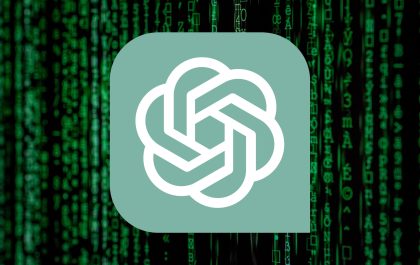–DGIST (Daegu Gyeongbuk Institute Of Science And Technology)
Scientists explain how collaboration between cloud and network service providers could enable advanced 5G applications.
A research team led by Prof Jeongho Kwak from Daegu Gyeongbuk Institute of Science and Technology (DGIST) has designed a novel system architecture where collaboration between cloud service providers and mobile network operators plays a central role. Such a collaborative architecture would allow for optimizing the use of network, computing, and storage resources, thereby unlocking the potential of various novel services and applications.

That many novel network- and cloud-dependent services will have become commonplace in the next few years is evident. This includes highly demanding technological feats like 8K video streaming, remote virtual reality, and large-scale data processing. But, it is also likely that today’s network infrastructures won’t make the cut unless significant improvements are made to enable the advanced, “killer” 5G applications expected in the imminent 5G era.
So, instead of having cloud service providers (CSPs) and mobile network operators (MNOs) like Google and like Verizon independently improve their systems, what if they actively collaborated to achieve common goals? In a recent paper published in IEEE Network, a team of scientists, including Prof Jeongho Kwak from Daegu Gyeongbuk Institute of Science and Technology in Korea, explored the benefits and challenges of implementing a system focused on MNO-CSP collaboration.
In their study, the scientists propose an overarching system architecture in which both CSPs and MNOs share information and exert unified control over the available network, computing, and storage resources. Prof Kwak explains, “The proposed architecture includes vertical collaboration from end devices to centralized cloud systems and horizontal collaboration between cloud providers and network providers. Hence, via vertical-horizontal optimization of the architecture, we can experience holistic improvement in the services for both current and future killer applications of 5G.” For example, by having MNOs share information about current traffic congestions and CSPs inform MNOs about their available computing resources, a collaborative system becomes more agile, flexible, and efficient.
Through simulations, the research team went on to demonstrate how CSP-MNO collaboration could bring about potential performance improvements. Moreover, they discussed the present challenges that need to be overcome before such a system can be implemented, including calculating the financial incentives for each party and certain compatibility issues during the transition to a collaborative system architecture.
Embracing collaboration between CSPs and MNOs might be necessary to unlock many of the features that were promised during the early development of 5G. Prof Kwak concludes, “We envision unconstrained use of augmented or virtual reality services and autonomous vehicles with almost zero latency. However, this ideal world will be possible only through the joint optimization of networking, processing, and storage resources.”
One thing is clear: “teamwork,” among various service providers, is essential if we are to keep up with the current Information Age.
Related posts
Brit Awards | Asake, Burna Boy And Other ‘New Cats’ Get Nominations
Nigerian singers Burna Boy, Asake, and Rema have been nominated for the 2024 Brit Awards. The nomination list for the annual music awards show was released on Wednesday 25, January 2024. Burna Boy and Asake made the ‘Best International Artiste’ category, while ‘Calm…
Brit Awards 2024 | The Full List Of Artist(e)s
This year’s Brits nominees have been revealed ahead of the ceremony in London in March. Dua Lipa is the first star confirmed to perform at the event – but how many awards is she up for? Musicians including Raye, Central Cee, J Hus and Blur are also…
The Miss Universe-Greatest Celebration of Women
-SOFIE ZERUTO The Miss Universe Organization is a global, inclusive of organizations that celebrates all cultures, backgrounds and religions. It creates and provide a safe space for women to share their stories and drive impact personally, professionally, and philanthropically. The women who participate in this…
All Africa Music Awards; Categories and Regions
-MUSIC IN AFRICA All Africa Music Awards (also referred to as AFRIMA) is an annual awards event. The awards event was established by the International Committee AFRIMA, in collaboration with the African Union (AU) to reward and celebrate musical works, talents and creativity around the African continent while promoting…
Top 10 Cryptocurrencies To Invest in January 2024
-Michael Adams From Bitcoin and Ethereum to Dogecoin and Tether, there are thousands of different cryptocurrencies, making it overwhelming when you’re first getting started in the world of crypto. To help you get your bearings, these are the top 10 cryptocurrencies based on their market…
The Risk And Reward Of ChatGPT In Cybersecurity
Juan is an experienced CTO with a demonstrated history of working in the computer and network security industry. He is an information technology professional skilled in SAP and Oracle applications, computer forensics, vulnerabilities research, IPS/IDS and information security. Unless you’ve been on a retreat in…
Explained – History Of Money From Fiat To Crypto
What is money? Money as a concept has been a cornerstone of human civilization and economic development. To start with the latter, money is a method of storing value and worth, and it also functions as a medium of exchange that allows individuals to exchange…
Studies Show That Nigerian Crypto Foreign Investment Is At A Record Low
Foreign direct investment in Nigeria fell by 33% last year due to a severe shortage of dollars, which discouraged crypto companies from expanding into the country. The largest economy in Africa has a foreign investment problem despite exponential growth in crypto adoption. The National Bureau…











